#1910s turban
Explore tagged Tumblr posts
Text
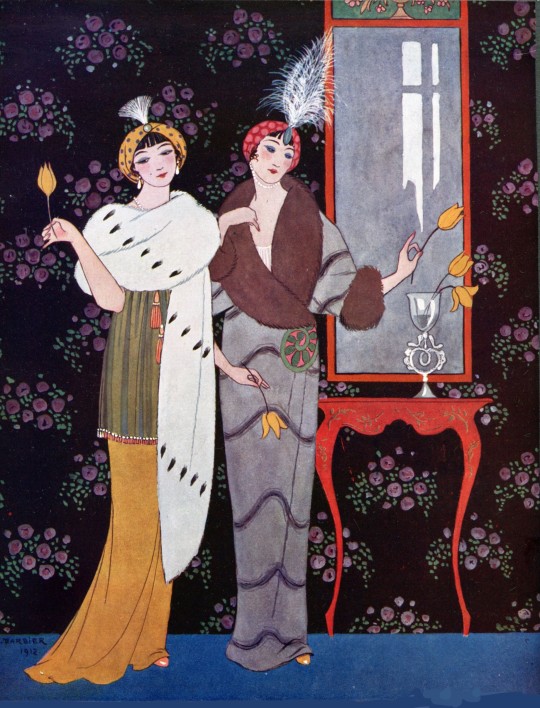
George Barbier illustration for Fourrures Max (Max Furs) in the catalogue 'Fourrures Portraits Minatures' for Fourrures Max Leroy et Schmid, Paris, 1912
#george barbier#illustration#1912#paris#1912 illustrations#aigrette#tulips#turban#art nouveau#painting#art#vintage#max furs#Fourrures Max#ermine#ermine fur#opera coat#evening wear#1910s evening wear#barbier#paris fashion#1910s#1910s fashion#1910s art#fashion illustration#vintage fashion#fashion design#fashion art#max leroy#Fourrures Max Leroy et Schmid
79 notes
·
View notes
Text
1911 Les Choses de Paul Poiret by Georges Lepape -
1911 Les Choses de Paul Poiret II by Lepape 1000X796.

1911 Les Choses de Paul Poiret III by Georges Lepape 872X1129.

1911 Les Choses de Paul Poiret IV by Georges Lepape 1000X851.
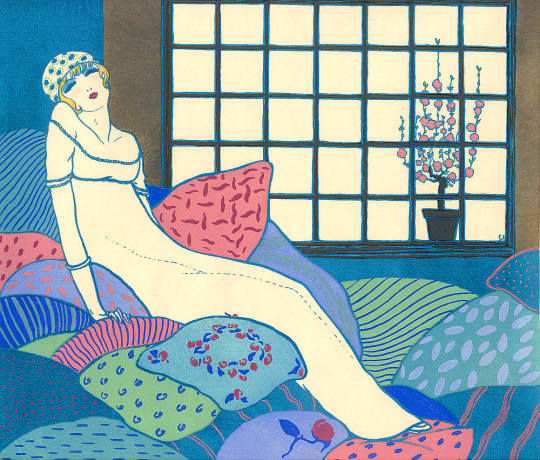
1911 Les Choses de Paul Poiret V by Georges Lepape 609X1000.

1911 Les Choses de Paul Poiret VI by Georges Lepape 900X1100.
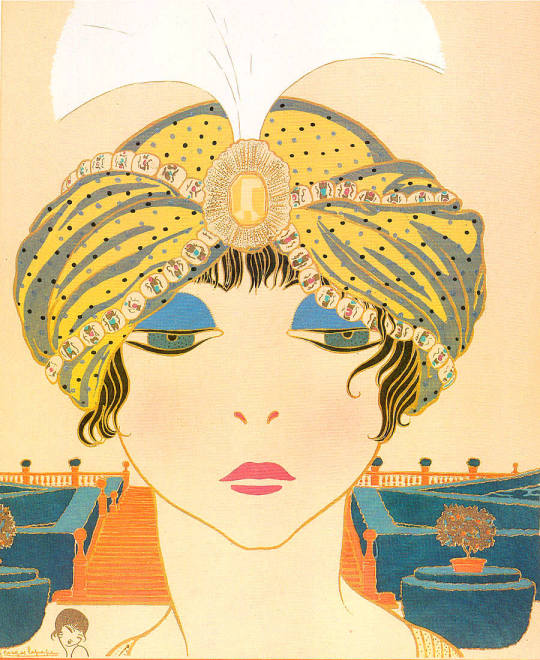
1911 Les Choses de Paul Poiret VII by Georges Lepape 713X812.
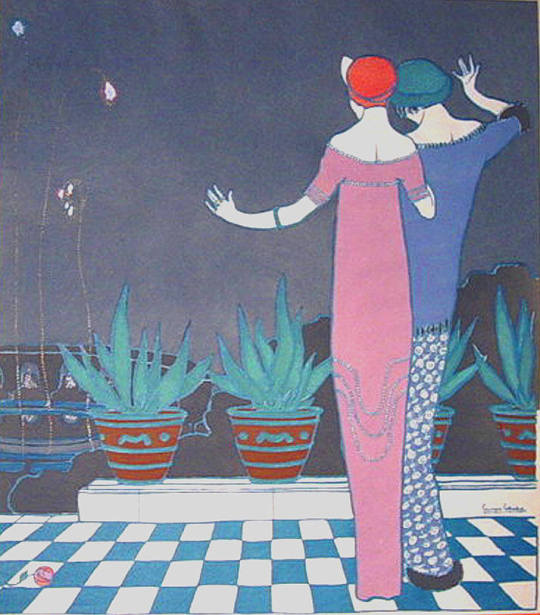
1911 Les Choses de Paul Poiret VIII by Georges Lepape 750X877.
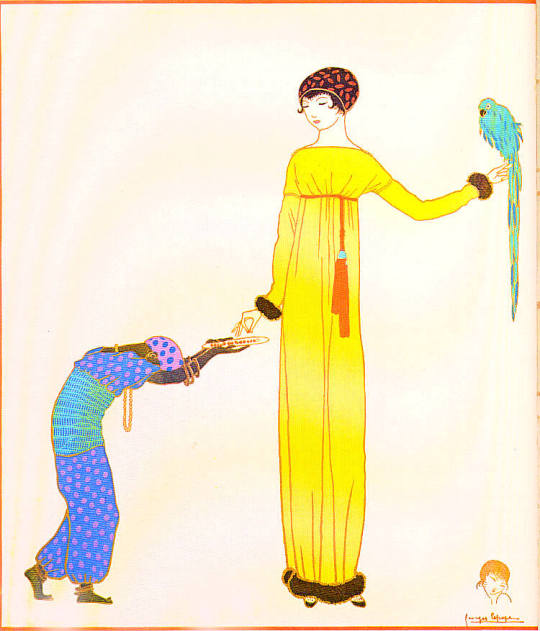
1911 Les Choses de Paul Poiret X by Georges Lepape 654X1206.

#1910s fashion#1911 fashion#Belle Époque fashion#Edwardian fashion#Paul Poiret#Georges Lepape#Empire waistline#tight skirt#fur-trimmed coats#close-fitting caps#turban
25 notes
·
View notes
Text
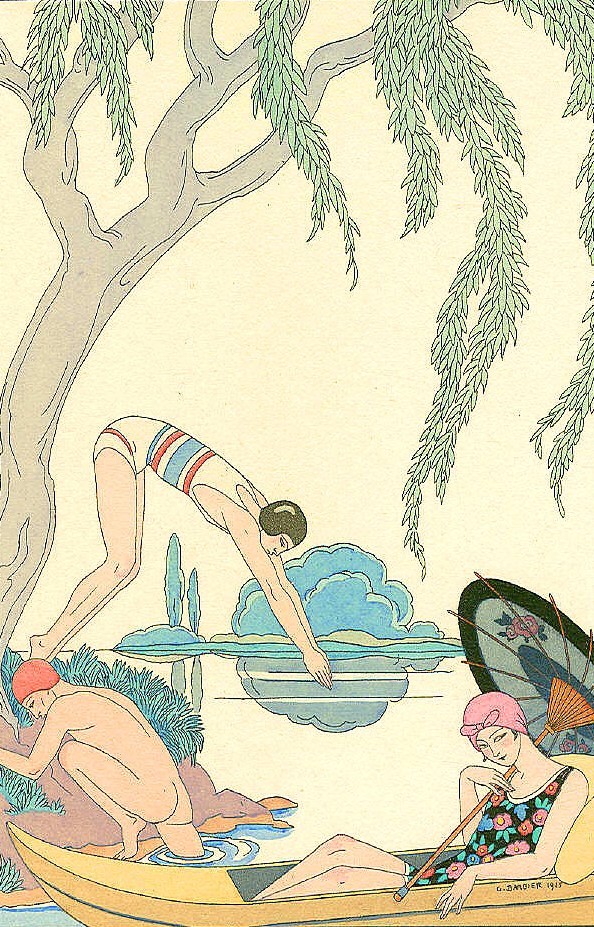
George Barbier, L'Eau (Water) for Falbalas & Fanfreluches Almanach des Modes Prsentes Passes et Futures. 1924.
Hand-coloured, plate-signed pochoir from Falbalas & Fanfreluches: "Water", part of the "Four Elements" quatrain from Barbier's 1924 Almanac. "How far we have come" could be an apt subtitle with the revealing new bathing suits (or lack thereof), not to mention the streamlined turban, shown here midway in its evolution from Poiret's elaborate 1910-12 confection to the iconic flapper headband. The background reflection, so very stylized Art Nouveau in line, is a subtle reminder of the vast societal changes which transformed into the new permissive era over the span of a mere 20 years or so (reaching back to when the turn-of-the-century bathing costume was of serviceable and stout wool jersey, right down to the full-stockinged knees). This famous illustrated almanac series was produced from 1922 to 1926 only and depicted high-society life in Paris - the fashion, social and artistic capital of the early inter-war years. Each issue contained a small diary and notation section, an introduction by one of the leading social/cultural doyens of the day, a decorative cover and twelve fashion plates (one for each month of the year). (x)
#1924#illustration#water#george barbier#barbier#art deco#jazz age#20s paris#paris#paris fashion#l'eau#four elements#elements#high-society#high-society life#high-society life in paris#20s lifestyle#20s parisians#my edits#art#1924 illustrations
49 notes
·
View notes
Text
youtube
Carl Reinecke (1824-1910) - Violin concerto opus 141
Movement 1 : Allegro moderato Movement 2 : Lento Movement 3 : Finale, Moderato con grazia
Ingolf Turban, violin
Berner Symphonie-Orchester Johannes Moesus
6 notes
·
View notes
Text

Rudolf Lehnert and Ernst Landrock • Woman with a turban, Tunis, 1910
25 notes
·
View notes
Text
The 1920s - part 2
The Look
Typical underwear of the 1920s

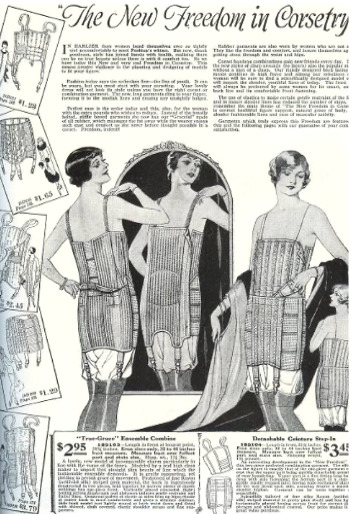
This advertisement for the new freedom corset helped women to achieve the flat shapes and less figure hugging look required to make the fashions of the 1920s look good on the every day woman.
The new stylish look of the 1920s
The Eaton crop was a revolution in hair styles.
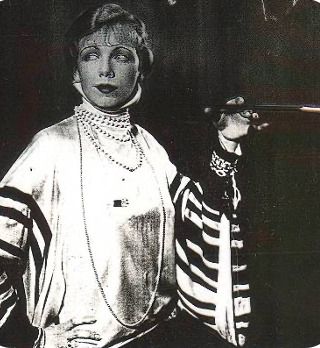

Feathered headbands and turbans were the look of the era, they were often the image associated with the La Garconne / flapper look in which was inspired by the art nouveau style left over from the 1910′s and by the mid 1920′s. If you chose to wear one, you pushed it well back and lost the feathers. Sequined caps were also a big thing and heavily ornamented were also popular. Hat Fashion went side by side with hair styles. The big decision facing many women was to Bob or not to Bob, to Crop or not to Crop, or just play safe go with the Fingerwave style.


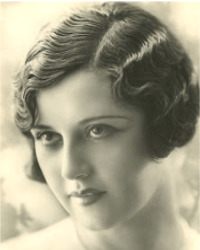
Menswear
The Prince of Wales was the ambassador for British fashion and fabrics across the world.
In 1922, Fair Isle knits were made fashionable by the Prince of Wales when he wore one on the golf course at St Andrews.
The Prince’s support of the Fair Isle sweater probably helped to save the knitting industry that remains to this day on the small Scottish island.
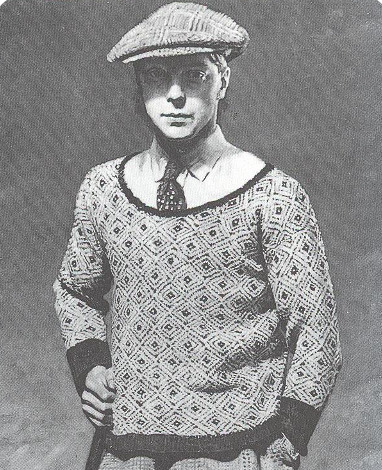
During 1925 the men wore ‘bum freezer’ length jackets. Here we see gentlemen at the races in the new relaxed jackets.
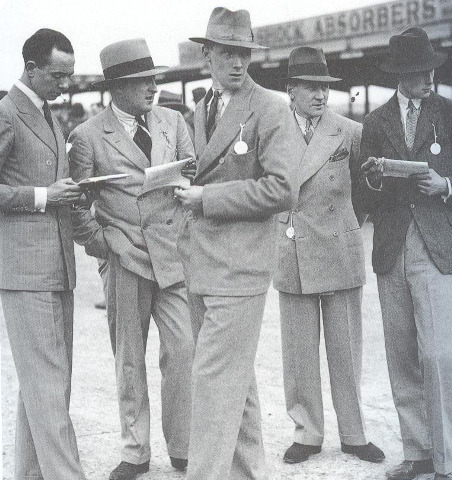
Sporting wear in England consisted of white flannel trousers and blazers. This was a very relaxed and elegant look.
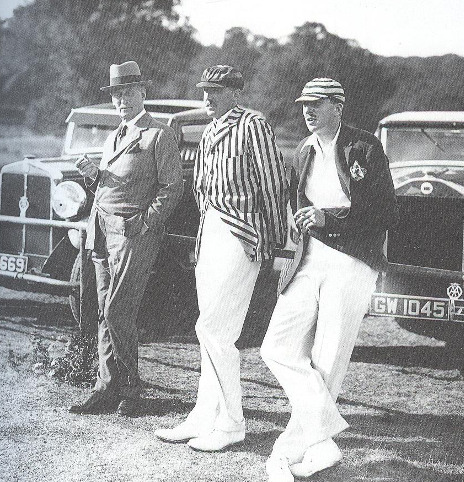
The 1920s passion for dressing soft extended to fabrics as well as to patterns and colours, tweed was extremely popular. Often in gaudy checks and bright stripes.
1925 marks the year that Oxford bags were born, they replaced the slim trousers worn by most young men. For the next 30 years, loose fitting trousers would remain the fashionable fit. The image below shows the comfortable functional aspects of the original 28 inch grow to 40 inch.

Day wear may have become more relaxed but when it came to evening wear men where still expected to wear black tie and tails. Below we see a typical evening scene with men dressed in black dickie-bows and evening suits. This was a universal style adopted by all men which we still see today.

Rudolph Valentino was the heart throb of the silent movies and influenced the hairstyle shown below of American and English men. The look was achieved by soaking the hair and wrapping the head in linen bandages until it dried.
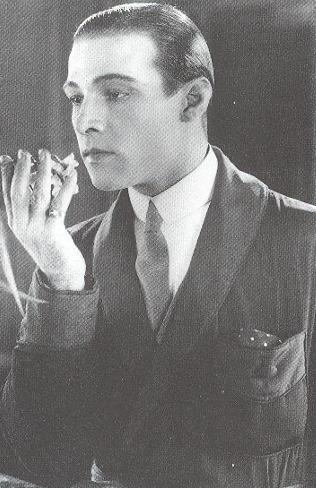
Men’s shoes came in a variety of styles and patterns – perfect for ‘cutting a rug’ in the roaring twenties (1925)
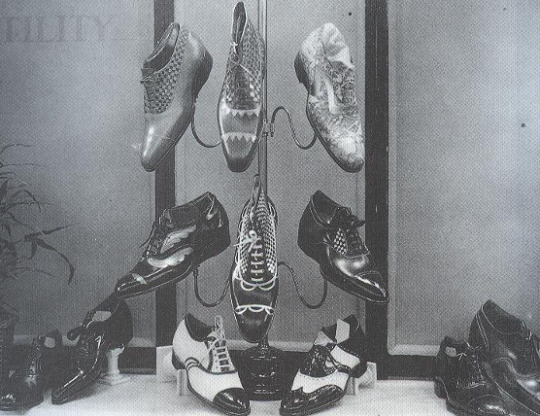
5 notes
·
View notes
Text
(Disclaimer: While I am alluding to a historical setting and using historical characters, this story is a work of fiction EXCLUSIVELY. The baby mentioned here is an original character who did not exist in real life. Also, I dedicate this story to @amypihcs !)
Tw: suicide mention, Orientalism, death
The Grim Game
May, 1910
Harlem, New York City
It was a windy and rainy night, quite atypical for the month of May. Street lamps were illuminating the West 113th Street and its many fancy buildings, their lights bright as ever.
Some of the inhabitants of the many brownstones lining the street were preparing for dinner. Some were merely drinking hot tea or chocolate while discussing the business of that day and the plans for the next one. Others yet were already putting out the lights and preparing to retire to bed after a long day of work or school.
However, one particular household was doing none of the above, for an unexpected occurrence had disrupted their usual lives mere hours earlier. An occurrence after which the lives of that particular family would change forever.
“We should boil the milk first. That’s how it was done back in our country.” an old woman whispered in German while hovering around the stove. “The last thing we need is the baby being sick, my dear Bess.” she added, turning to her daughter-in-law.
Bess, a short woman in her early thirties, responded with a simple nod, her wide full lips curled at the corners into a smile as she was holding the baby.
Wrapped up in a bundle of white cloth with a polka dot pattern, the baby girl was so pink, so quiet and so tiny that she somewhat resembled a life sized doll, but the softness of her pink skin, her heartbeat and her soft gurgles were positive proof that the baby was in fact very much human.
“Sleep, my little princess.” Bess whispered in German, tears of joy streaming down her cheeks as she listened to her new daughter’s soft gurgles. “My little Mattie. Let’s go upstairs and make sure that Papa doesn’t catch his death of cold, alright?”
With that, Bess left the kitchen and headed straight for the master bedroom, where her husband was lying in bed, wrapped up in warm blankets and sipping hot chocolate.
Bess’s husband was a man who, while not very tall, had enough muscle mass to pass for a circus strongman and the unique brand of charisma that only the best of performers possess. And indeed he, Harry Houdini, was a household name in the United States, known for his daring escapes and for exposing fraudulent “psychics”.
As soon as the door opened and his beloved wife tiptoed inside with Mattie in her arms, Houdini smiled, put his cup of hot chocolate onto a nightstand and gently took the baby into his arms, carefully rocking the bundle and cooing in German, the mother tongue of both his and Bess’s families.
Meanwhile, unbeknownst to the new parents nor to Mattie’s new grandmother, two ghosts gathered near the window of the master bedroom, looking closely at the happy family. These ghosts were none other than the recently deceased Mr. and Mrs. Dorn, the newest additions to the list of frauds exposed by Harry Houdini.
“You know, Otto,” said Mrs. Anna Dorn, a petite woman who was still donning her Turkish inspired dress and her white turban. “I still can’t believe that our foe is the same man who is taking care of Martha now.”
Otto Dorn, a short and stocky man whose head was also adorned by a turban, sighed, placing his transparent hand onto his wife’s shoulder.
“I can’t believe it either, my love, yet I do feel grateful that Houdini dove into the river to attempt to save us. At least he succeeded in saving Martha. It would not do anyone good to take her with us.”
“I know.” Mrs. Dorn sighed as well, guilt consuming her even in death. “I wished to protect our daughter from bearing the scarlet letter of having frauds for parents… However, I now feel that Martha might have a second chance at life and grow up to become an honest young woman.”
Mr. Dorn smiled, pulling his wife into a warm embrace.
“Let us hope that you are correct, my love.”
Mrs. Dorn smiled as well, and the two ghosts vanished into the night while the Houdinis were holding the baby girl and quietly discussing what design they wanted to use for Mattie’s nursery.
The ghosts crowded near the window to see the baby the new caretakers brought into the manor.
#history#historical fiction#suicide tw#orientalism tw#cw death#historical fanfiction#my writing#my art#i did research baby formulas specifically for this#at the time commercial ones already existed#but many people still just used animal milk#on its own or mixed with water and sugar and honey#rubber tips for baby bottles appeared in 1845#also in the 1910s people already had bottles closer to the modern design#harlem at this point in history is not a black neighborhood#it was first populated by German#Jewish and Italian families#West 113th Street in particular was considered to be for the affluent families#mostly German and/or Jewish#Houdini did live on that street in reality#his brownstone stands there today#harry houdini#bess houdini
94 notes
·
View notes
Text

A fashion illustration of women with feathered hats and long gloves standing in bright purple, blue, and black gowns. Large hats with wide brims, such as the one in the middle, were all the fashion in the early years of the century, while evening turbans such as the one on the right came into style in 1910.
Credit: Fashion Institute of Technology/SUNY
1 note
·
View note
Text
2022 Project Goals
January 5, 2022
My list for 2021 basically contained every project I could think of. It was incredibly aspirational, but not very realistic. So this year I'm trying a different approach - short and sweet. I'm looking at my list for 2021, what I did and didn't accomplish, and what my priorities are for 2022.
My main goal for this year is expanding my Regency wardrobe and continuing to build the foundations for my 1890s dreams. So let's get into it!
Regency
A chemisette - I finished a ruffly chemisette just before the new year, but I'd like a habit-style chemisette as well.
An open robe - I have the American Duchess/Simplicity 8941 pattern and 6yds of 'silk' in my stash. I'd really love to make the sleeves removable for added versatility!
Etc. - Other small projects include vests/bodices, reticules, or a turban, all of which would be stash projects. (At the time of writing this, I've already finished two reticules!)
1890s
Combinations - Ok, I actually want early Edwardian combinations because I think they're prettier and it's underwear so I don't care that it's "inaccurate". I've just bought the Truly Victorian's E02 Edwardian Underwear pattern. I inherited an unknown length of white cotton that might work well (though I don't know how much I have), and I already have some lace and ribbon set aside.
Etc. - If I get the combinations done, next on the list would be bum/hip pads, a bust improver, and a corset cover. These could probably be made from what's left of the mystery white fabric I intend to use for the combinations.
Misc.
More doll clothes for Adelaide, my cloth doll - I already have a bundle of scrap fabric set aside for her and some cute ideas, so we'll see what happens!
A casual spring/summer dress for my modern wardrobe - the half dozen dresses I have in my modern wardrobe are either cold-weather dresses or slightly too formal for most occasions. I'm considering view C or D of Simplicity 8914 or a stripey late-1910s/early-1920s-inspired dress. Either way, I would have to buy fabric for this project.
See? A very restrained and much more realistic set of goals.
There are really only three "big" projects on here (the open robe, combinations, and summer dress), and those would all start from a pattern. This list is also mostly stash projects, so we'll see if I can get through 2022 without buying much fabric! And hey, I've already got two small projects under my belt.
Whatever your plans are for the new year, I wish you the best!
Stay warm. Stay safe. Stay healthy.
0 notes
Text
vintage trends

Fashion is a constant rotation and comes back faster than ever, here I have looked into my top trends to see which can inspire me when creating my own collection inspired by Chatsworth history and architecture.

From the nineteen twenties to the 1980s we’ve seen this simple spotty pattern emerge time and time again in varying forms even in modern day reproduction clothing, polkadots patterns are vastly used as they just scream vintage style. I love the polkadots as I feel that it is timeless and overall and fascinated with the way each decade styled the polkadots differently from sweetheart puff dresses to slim fitting blazer tops.

Oversized fashion hats are one of my favourite accessories that I have ever seen I love how they are very playful and elegant and can make any look, look expensive. How much does accessories has been around since the 16th century? they started out as structured hats similar to those of male courtiers. In the late 19 century art nouveau influence the heights of the Edwardian era with why do brims that balance both the fuller Pompadour stars on the floor instead hats were decorated with floral accents rosettes into the effect was diaphanous and for frothy. In the 1910s and 1920s as the hairstyle became shorter hats sat closer to the head. Turbans and clinches were popular and often accentuated with feathers and jewels. In the 1960s that ever popular pillbox hat was favoured by Jackie Kennedy and she had them personally designed for hair by Halston this made them all rage among the conservative set and all major department stores rush to keep them in stock. in the 1980s hats became out of fashion but in Britain hats have never lapsed in popularity due to Queen Elizabeth where she was rarely seen without one hats are worn at christenings, garden parties, weddings and funerals the main event for hat is the Royal Ascot Derby ‘ladies day’ at this event its considered to be the Oscars for original hat design. Wacky heights of prominently on display each June.

Faux fur was especially popular in the 20s. I personally love how elegant and sophisticated it looks and can turn a simple outfit into a glamorous statement although real fur was trendy through this period of time I much prefer faux fur.
1 note
·
View note
Text

1912 Fourrures Max (Max Furs) in the catalogue 'Fourrures Portraits Minatures' by George Barbier. From tumblr.com/mote-historie/732453186620866560/george-barbier-illustration-for-the-catalogue?source=share& 1939X2541.
#1912 fashion#1910s fashion#Belle Époque fashion#Edwardian fashion#Fourrures Max#Barbier#feathered turban#fur stole#fur-trimmed coat#over-skirt#tight skirt
5 notes
·
View notes
Photo

Ernst Ludwig Kirchner - Orientale mit Turban. Circa 1910
0 notes
Photo

La Contessa Spalletti (La Contessa Rosa Spalletti aka Rosa Lanza di Scalea), Photo by Mario Nunes Vais, 1915.
Possibly a daughter or granddaughter of Gabriella Rasponi Spalletti who was born in Ravenna Rasponi April 10, 1853 by Cesare Rasponi Bonanzi (1822-1886), vice consul in France, a deputy in Lanza governments and De Pretis and later senator of the Kingdom of Italy and Letizia Rasponi Marat (1832-1906), daughter of conte Giulio Rasponi, and granddaughter of Gioacchino Marat and Carolina Bonaparte (1782-1839), Napoleon's sister.
Villa Spalletti Trivelli in Rome.
#la contessa spalletti#mario nunes vais#gli italiana#1910s#aigrette#turban#1910s aigrette#1910s turban#1910s fashion#1910s italian fashion#italian fashion#vintage#vintage italian#vintage italian fashion#italiana#nunes vais#countess spalletti#gabriella rasponi spalletti#Cesare Rasponi Bonanzi#Letizia Rasponi Marat#marat#Gioacchino Marat#carolina bonaparte#italian beauty#belle epoque#la belle epoque#contessa rosa spalletti#1915#La Contessa Rosa Spalletti#rosa lanza di scalea
512 notes
·
View notes
Text
youtube
Carl Reinecke (1824-1910) - Violin Concerto in G minor
Ingolf Turban, violin
Berner Symphonie-Orchester, Johannes Moesus
2 notes
·
View notes
Photo

Kees van Dongen. La robe rose (Ève Francis), c. 1919, oil on canvas, 146.5 cm × 114.3 cm (57.7 in × 45.0 in)
130 notes
·
View notes
Photo

Veronica Lynn by Sequoia Emmanuelle
https://www.veronicalynndance.com/
#sequoiaemmanuelle#artdeco#fortuneteller#artnouveau#1890s#1920s#1910s#exotic#gypsy#turban#matahari#thedabara#red#redphotography#redbackdrop#losangelesmodel#lamodel#burlesque#burlesquedancer#burlesquemodel#cabaret#cabaretdancer#dance#dancer#tribalfusion#bellydance#bellydancer
38 notes
·
View notes